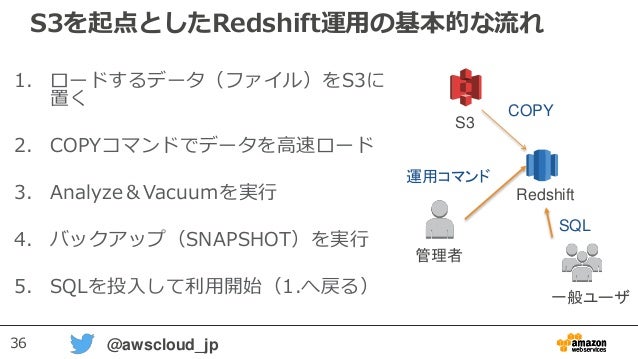

Your Cluster or just to use as examples Column Encoding Utility In the StoredProcedures directory, you will find a collection of stored procedures for managing Your Cluster, generating Schema DDL, and. In the AdminViews directory, you will find a collection of views for managing In the AdminScripts directory, you will find a collection of utilities for running That will assist you in getting the best performance possible from Amazon Redshift. This GitHub provides a collection of scripts and utilities That uses columnar storage to minimise IO, provide high data compression rates,Īnd offer fast performance. vacuum-analyze-utility.sh -h endpoint -u bhuvi -d dev -s sc1 -t tbl1 -a 1 -v 0 -r 0.01ĭo a dry run (generate SQL queries) for analyze all the tables on the schema sc2./vacuum-analyze-utility.Amazon Redshift is a fast, fully managed, petabyte-scale data warehouse solution Run analyze only the schema sc1 but set the analyze_threshold_percent=0.01. Run the vacuum only on the table tbl1 which is in the schema sc1 with the Vacuum threshold 90%./vacuum-analyze-utility.sh -h endpoint -u bhuvi -d dev -s sc1 -t tbl1 -a 0 -c 90

Run the Analyze on all the tables in schema sc1 where stats_off is greater than 5./vacuum-analyze-utility.sh -h endpoint -u bhuvi -d dev -v 0 -a 1 -f 5 vacuum-analyze-utility.sh -h endpoint -u bhuvi -d dev -x 10 Run vacuum and analyze on the tables where unsorted rows are greater than 10%./vacuum-analyze-utility.sh -h endpoint -u bhuvi -d dev -v 1 -a 1 -x 10
VACUUM ANALYZE REDSHIFT PASSWORD
Use a password on the command line./vacuum-analyze-utility.sh -h endpoint -u bhuvi -d dev -P bhuvipassword vacuum-analyze-utility.sh -h endpoint -u bhuvi -d dev -b 'tbl1,tbl3' -v 0 Run Analyze only on all the tables except the tables tb1,tbl3./vacuum-analyze-utility.sh -h endpoint -u bhuvi -d dev -b 'tbl1,tbl3' -a 1 -v 0
VACUUM ANALYZE REDSHIFT FULL
vacuum-analyze-utility.sh -h endpoint -u bhuvi -d dev -k sc1 -o FULL -a 0 vacuum-analyze-utility.sh -h endpoint -u bhuvi -d dev -k sc1 -o FULL -a 0 -v 1 Run vacuum FULL on all the tables in all the schema except the schema sc1.

Run vacuum and Analyze on the schema sc1, sc2./vacuum-analyze-utility.sh -h endpoint -u bhuvi -d dev -s 'sc1,sc2' Run vacuum and Analyze on all the tables./vacuum-analyze-utility.sh -h endpoint -u bhuvi -d dev Here is my shell script utility to automate this with better control over the table filters. Then create a cron job that will run this script (In this example, I run it daily at 2:30 AM) chmod +x run_vacuum_analyze.shĪdd the following entry: 30 2 * * * /run_vacuum_analyze.sh Python analyze-vacuum-schema.py -db $REDSHIFT_DB -db-user $REDSHIFT_USER -db-pwd $REDSHIFT_PASSWORD -db-port $REDSHIFT_PORT -db-host $REDSHIFT_HOST In your text editor create a file called run_vacuum_analyze.sh with the following, and fill in the values for the your environment: export REDSHIFT_USER=Įxport WORKSPACE=$PWD/src/AnalyzeVacuumUtility Pull the amazon-redshift-utils repo in git: git clone Ĭreate a script that can be run by cron. Here is an example of how it can be done: The great thing about using this tool is that it is very smart about only running VACUUM on tables that need them, and it will also run ANALYZE on tables that need it. Your best bet is to use this open source tool from AWS Labs: VaccumAnalyzeUtility. Unfortunately, you can't use a udf for something like this, udf's are simple input/ouput function meant to be used in queries.


 0 kommentar(er)
0 kommentar(er)
